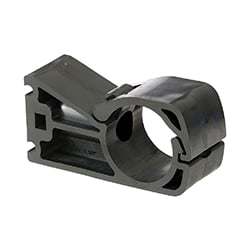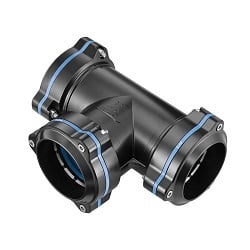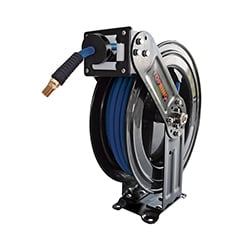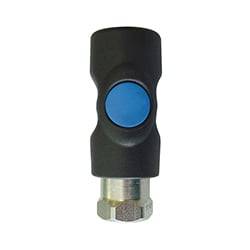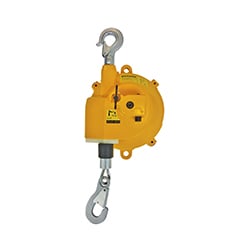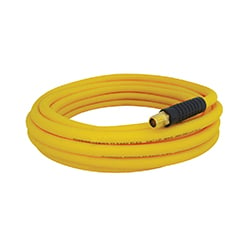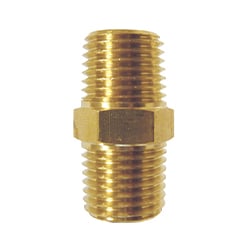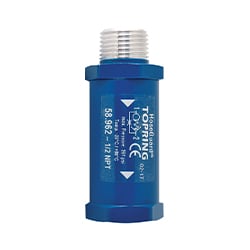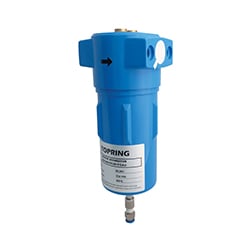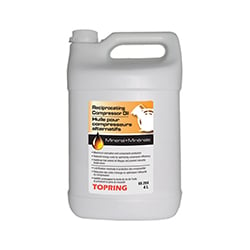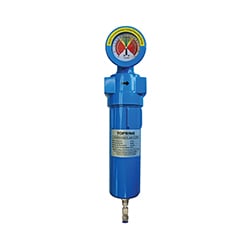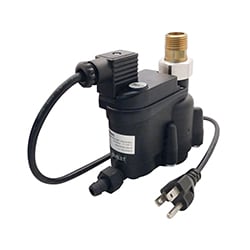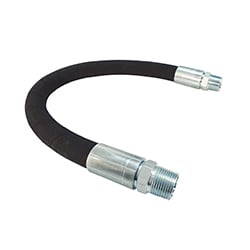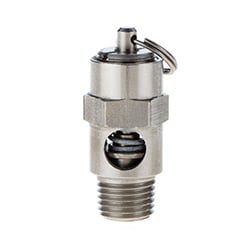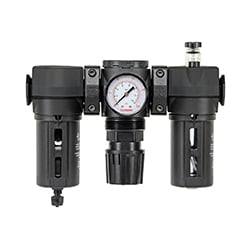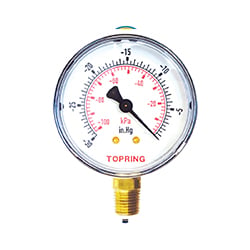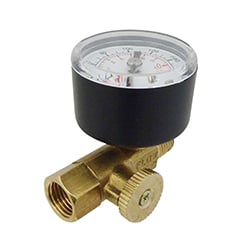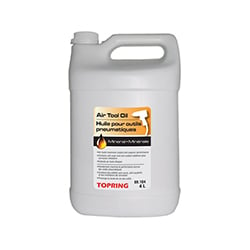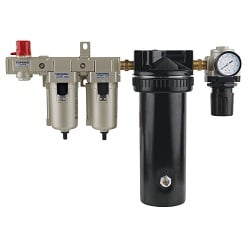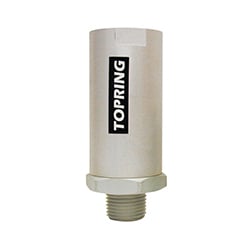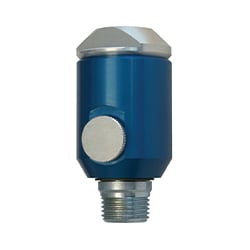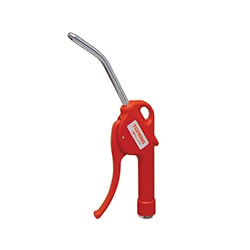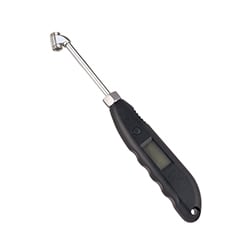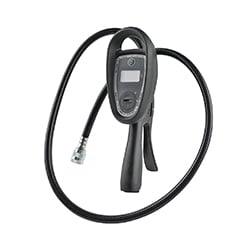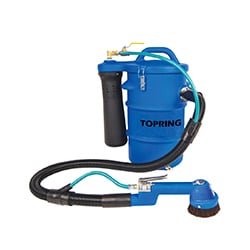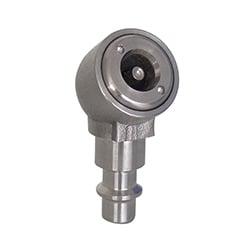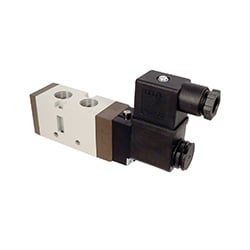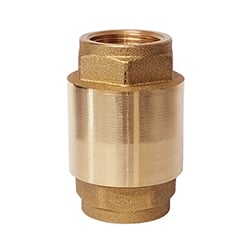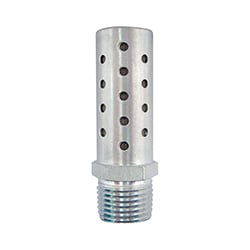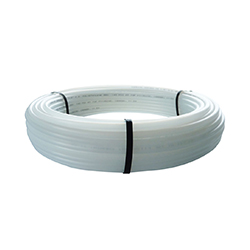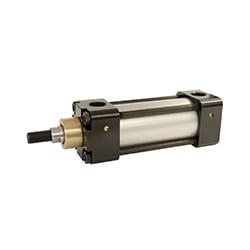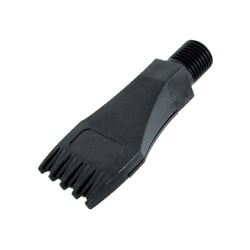A compressed air system in a factory normally operates between 80 and 120 PSI. Most air tools require a working pressure of approximately 90 PSI in order to operate. This also applies to compressed air blow guns.
This level of pressure can have serious or even fatal consequences for users and equipment. This is why it is absolutely necessary to:
- Ensure that compressed air-powered equipment is used in a safe and secure manner
- Comply with safety standards for compressed air use
In this article, we will discuss the 30 PSI standard. The 30 PSI standard is a compliance standard that was put in place to prevent accidents related to the use of a compressed air blow gun.
Safety blow gun: the 30 PSI standard
A blow gun is considered safe when the static pressure at the point of blockage does not exceed 30 PSI. In other words, if you use a blow gun, you must ensure that it is equipped with a nozzle that reduces the pressure to 30 PSI or an internal mechanism that stops the airflow completely if the tip of the nozzle becomes clogged.
For more information on this standard, you can consult the legislation of your province or country (for example, the CNSST in Quebec). Consult the Canadian Centre for Occupational Health and Safety (CCOHS) website to access the various fact sheets related to the safe use of compressed air in Canada.
Things to know
In the United States, the Occupational Safety and Health Administration (OSHA) has established standards for the use of compressed air in order to prevent accidents. Its safety standards are widely known by Canadians and often used as a benchmark, even though they are not legislated in Canada.
Why is it dangerous to exceed 30 PSI in the event of an obstruction?
Static pressure above 30 PSI can cause serious injury. For example: while using a blow gun, the nozzle of the blow gun accidentally comes in contact with your hand or any other part of your body.
Situation A – Using an non restricted blow gun
If you use an non restricted blow gun, that is, one with a pressure of more than 30 PSI in the event of a nozzle obstruction, there is a good chance that the air will penetrate directly into the skin pores. This can lead to serious consequences (skin detachment, creation of bubbles in the bloodstream… which could even cause an embolism or a cardiovascular incident).
Situation B – Using a safety blow gun
If you use a safety blow gun, i.e. with a pressure under 30 PSI in the event of a nozzle blockage, the chances of injury from contact with the air stream are almost nonexistent.
Solutions to meet the 30 PSI standard
In order to be safe and meet the 30 PSI standard in the event of a nozzle blockage, we recommend one of the following three options.
1. Safety blow gun
Depending on the model, safety blow guns have one or more side openings on the nozzle. They allow air to escape through the sides if the nozzle head becomes obstructed.

2. Maximum safety blow gun
In the event of a nozzle blockage, the safety regulator located inside the blow gun will limit the outlet
pressure to a safety standard of less than 30 PSI.
This way, the user will never be exposed to a dangerous jet of air on their skin.
When the nozzle is clearded, the safety regulator will re-engage to allow the air to continue flowing.

Another alternative – The preset pressure regulator
If you do not have a safety blow gun (for example, non-restricted blow guns), there is a solution available to reduce the air pressure at the outlet, regardless of the inlet pressure. To do this, you must install at the point of application a preset pressure regulator set at 29 PSI.
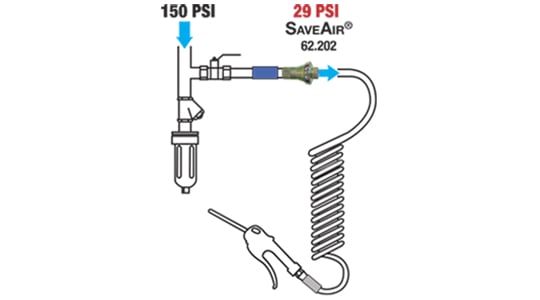
The preset pressure regulator is installed between the compressed air system and the air hose.
Whichever solution you decide on, think about your safety and the safety of your work environment. Consult our Safety and Prevention Solutions for Compressed Air catalogue to learn more about the different options available to you.


